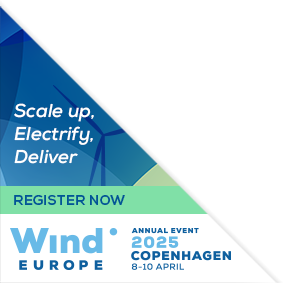Posters
Siblings:
ProceedingsProgrammeSpeakersPostersContent PartnersPowering the FutureMarkets TheatreResearch & Innovation in actionStudent programmePresenters dashboardCome meet the poster presenters to ask them questions and discuss their work
We would like to invite you to come and see the posters at our upcoming conference. The posters will showcase a diverse range of research topics, and will give delegates an opportunity to engage with the authors and learn more about their work. Whether you are a seasoned researcher or simply curious about the latest developments in your field, we believe that the posters will offer something of interest to everyone. So please join us at the conference and take advantage of this opportunity to learn and engage with your peers in the academic community. We look forward to seeing you there!

PO238: POSTER AWARD WINNER - Wind Inertia-Driven Excitation Reduction (WIDER): an innovative way to mitigate 3P loads on wind turbines
Frédéric Gentil, R&D Engineer - Scientific & Technical Advisor, TotalEnergies
Abstract
The wind forces on a turbine have a constant part modulated by a dynamic component. The dynamic component is due to many factors, including: the variation of the average wind speed on the surface swept by the rotor, the changes in wind direction, the variation of wind speed as a function of altitude (shear effect), the local turbulence, and the disturbance of the flow created by the presence of the wind turbine itself (shadow effect). Some of these dynamic stresses are aleatory in nature and cover a wide spectrum of frequencies. However, the shadow and shear effects are predictable and of known frequency called "3P" which corresponds to three times the speed of rotation of the rotor. This so-called "3P effect" leads to a thrust force variation that contributes significantly to the fatigue damage of the structural elements of the turbine, including its mast and foundation. Nevertheless, the increase of turbine scale and rated power results in an increase in rotor diameter and therefore a decrease of rotation speed because of the tangential speed limitation at the blade tip (corrosion). The 3P excitation frequency on larger structures is closer to their natural frequency, making resonance a real issue. The proposed WIDER (Wind Inertia Driven Excitation Reduction) device applies to exert an inertial force at the known 3P frequency. This force counteracts the decrease of thrust occurring at each passage of a blade in front of the tower.










